The best tripod for photographers: give your camera a rock-steady support
The best tripods offer high performance and sturdy build quality at a fair price, but which will win the three-legged race?
Who needs a tripod, in these days of in-body and optical image stabilization? Well, you can count me in for one. I think a tripod is as useful nowadays as it’s ever been. For long exposures capturing anything from landscapes using 10-stop neutral density filters, to twilight cityscapes and the night sky, a tripod is still one of my kit bag essentials. I also need one for keeping my camera still and steady through a sequence of shots, for example when taking exposure-bracketed stills to merge into an HDR (High Dynamic Range) image.
And then there’s architectural photography, when I want to set up my camera with supreme precision, or maybe take a series of shots with incremental panning to create panoramas. I could go on, the list is long.
If you’re after a tripod that folds down really small, take a look at our separate buying guide on the best travel tripods. And whereas the photography tripods covered in this buying guide aim to give fixed, solid support for stills; free-flowing video capture is another thing altogether. For that, check out our guide to the best video tripods.

Matthew Richards is a photographer and journalist who has spent years using and reviewing all manner of photo gear. He is an encyclopedia when it comes to all manner of cameras, camera holsters and bags, flashguns, tripods and heads, printers, papers, and inks, and just about anything imaging-related.
The Quick List
Here's a quick rundown of all the tripods in this guide. Scroll down for a more in-depth look at the individual products.
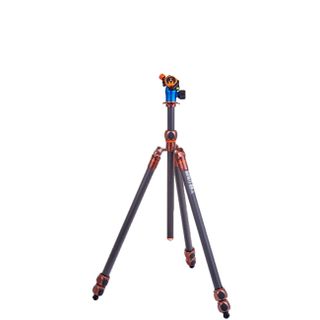
This is the tripod that I use most of the time. It’s super-sturdy, enormously versatile and folds down pretty small despite having a really tall maximum operating height. And it’s beautifully crafted.
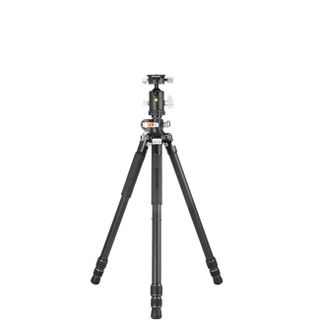
A really steady support that's ideal for heavy camera & lens setups, and I like that I can pivot the center column through a complete 180-degree arc, opening a feast of creative shooting possibilities.
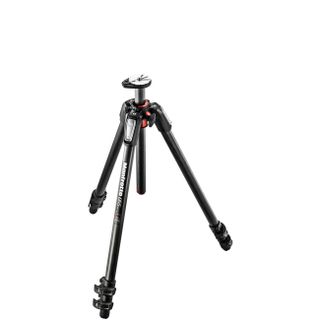
Manfrotto’s 055 series tripods are renowned among enthusiast photographers the world over. The MT055CXPRO3 is my pick of the crop. It’s really rigid with quick-action 3-section legs and a 90-degree pivot facility.
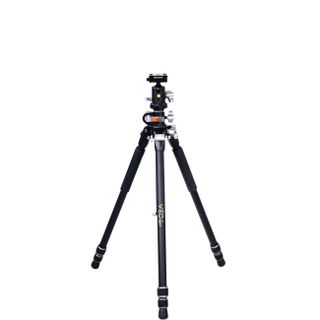
This is a rock-steady aluminum tripod that’s packed full of advanced features. It’s a strong contender that suits anyone who doesn’t want to pay the extra for a carbon fiber tripod but wants a seriously strong kit.
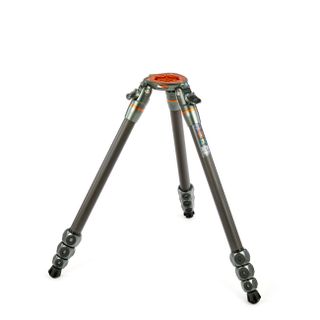
The Nicky is a smart option for hybrid photographers who shoot both stills and video. It’s undeniably pricey for a set of legs but you get what you pay for and it excels for quick and easy leveling.
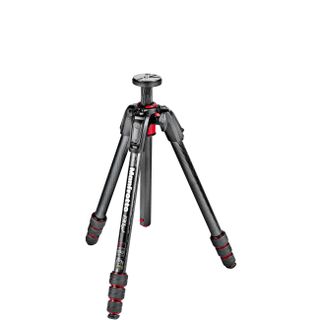
Manfrotto aluminum and carbon fiber 190 tripods come in various sizes and are the favorites of many enthusiast photographers. This puts a different spin on things, being unusually compact and featuring twist locks.
Load the next products ↴
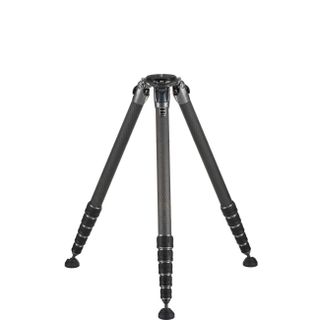
Gitzo is renowned as the Rolls Royce brand for tripods. Nicknamed ‘the Giant’, this one literally leaves most other tripods in its shadow. It’s so tall that it should probably feature a red light on the top to warn off low-flying aircraft.
The best tripods for photographers
Why you can trust Digital Camera World
Best tripod overall
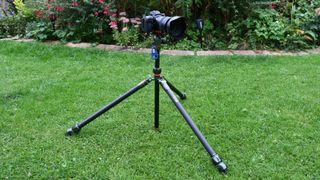
Specifications
Reasons to buy
Reasons to avoid
✅ You want a really tall tripod that folds down surprising small for easy stowage.
✅ You like the option of really low-level shooting, the center column is removable.
✅ You fancy the option of different optional footwear, including short posts for conversion to a tabletop tripod.
❌ You don’t feel the need for tripod legs with a huge 40kg load rating.
❌ You’d rather have a tripod with a pivoting center column.
❌ You don’t want to run to the expense of a carbon fiber tripod – the Charles 2.0 is the same tripod but magnesium alloy.
3 Legged Thing is a UK-based manufacturer with a deserved reputation among photographers for making attractive, sturdy tripods with real design flair. The Winston 2.0 is my outright favorite and I’m particularly impressed that, despite stretching to almost 2m in height, it folds down to just 61cm for the journey, in it’s supplied high-quality soft case. It’s also easily adaptable for ultra-low-level shooting.
Thanks to smart design with clever engineering, I find the Winston 2.0 quick to deploy and very resistant to flexing and vibration. Its leg and center-column sections are constructed from 8-layer carbon fiber, making them lightweight but solid, and the leg diameter is thick all the way down. I pair mine with a 3 Legged Thing's AirHed Pro and find it’s one of the most dependable tripods I’ve ever used. The legs and head are available as a complete kit, at a discounted price. Smart optional extras include a range of footwear. Indeed, as all of the legs are removable instead of just one for monopod duty, I convert mine to a tabletop tripod when I need one, with optional Vanz feet. If you’d rather save a few bucks and don’t putting on a bit of weight, the Charles 2.0 is basically the same tripod but made from magnesium alloy instead of carbon fiber.
Read more: 3 Legged Thing Winston 2.0 review
| Features | The Winston 2.0 is packed full of smart features making it very versatile. | ★★★★★ |
| Design | It’s a clever design, incorporating the best of heavy-duty tripods and travel tripods. | ★★★★★ |
| Performance | Performance is outstanding, with excellent rigidity even at maximum extension. | ★★★★★ |
| Value | The legs on their own and the complete kit with head are both great value. | ★★★★★ |
Best pivot column tripod
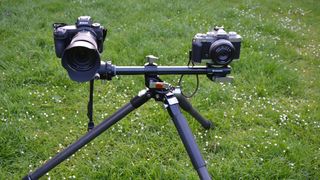
Specifications
Reasons to buy
Reasons to avoid
✅ You can make use of the full 180-degree pivoting center column.
✅ You want a tripod that can support two cameras, on one camera plus accessories.
✅ You’d like a dual-axis ball head for level panning for panoramas and shooting video.
❌ You don’t need the 25kg load rating and would rather have a tripod that weighs less than 2.6kg.
❌ You don’t feel the need for a pivoting center column.
❌ You’d rather save money by buying an aluminum rather than carbon fiber tripod.
I enjoyed some trips out with this fairly new tripod a while ago, which is billed as Vanguard’s most stable and versatile kit to date. It’s based on a super-sturdy carbon fiber build using large-diameter three-section legs and a pivoting center column. The Vanguard actually goes one better than the pivoting Manfrotto tripods in this guide, in that I can pivot the center column through a complete 180-degree arc instead of just using it in vertical or horizontal orientations.
I also like that the Vanguard comes with an extra platform that attaches to the center column. This enables me to mount two cameras at the same time, or a camera and another accessory like an LED light. The ball head supplied with the kit is a great match for the legs, being very versatile and particularly sturdy and robust. I also like that the ball head has dual panning sections, the upper one ensuring level panning even if the tripod legs aren’t levelled.
Read more: Vanguard VEO 3+ 303CBS review
| Features | Vanguard has packed almost every conceivable feature into this tripod kit. | ★★★★★ |
| Design | There’s some true innovation in the design, making it a hugely versatile tripod. | ★★★★★ |
| Performance | Thanks to the wide-diameter leg sections and good build quality, it’s very stable. | ★★★★★ |
| Value | The complete kit with dual-axis ball head is very reasonably priced. | ★★★★★ |
Best flip-lock tripod
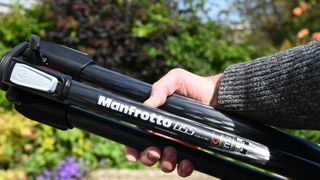
Specifications
Reasons to buy
Reasons to avoid
✅ You prefer flip locks to twist locks for all the leg sections.
✅ You like the idea of a 90-degree pivoting center column.
✅ You want rock-solid support.
❌ You’d rather buy a complete kit than head and legs separately.
❌ You’d prefer a pivoting center column that can be used at any angle.
❌ You feel the aluminum version of the tripod is better value.
I’ve used the aluminum version of this tripod, which is available as just a set of legs, or as a complete kit with either an XPRO Ball Head or XPRO 3-Way Head. At purchase time, I dug deeper into my pockets and forked out on the carbon fiber edition. It’s naturally more expensive but feels much more of a luxury item, is nearly half a kilogram lighter and, in my tests, proved more resistant to vibration. I generally prefer twist-lock clamps for the leg sections of tripods but the flip-locks of this one are cleverly designed and are particularly quick and easy to use.
I like that the tripod gives really solid support, and feels worthy of more than the 9kg maximum load rating given to it by Manfrotto. A killer feature for me is the pivoting center column that I can use as a horizontal boom. It’s great for macro shooting and for stopping the tripod feet from creeping into the shot when I’m using an ultra-wide-angle lens.
Read more: Manfrotto MT055CXPRO3 review
| Features | Manfrotto didn’t become famous by accident, with a history of good feature sets. | ★★★★★ |
| Design | The design matches genuinely useful features with excellent build quality. | ★★★★★ |
| Performance | It’s a particularly stable tripod that seems to punch above its maximum load rating. | ★★★★★ |
| Value | It’s expensive for just a set of legs rather than a complete kit. | ★★★★ |
Best aluminum tripod
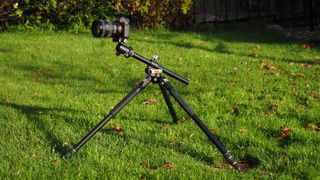
Specifications
Reasons to buy
Reasons to avoid
✅ You want a high-end tripod for half the money of a carbon fiber kit.
✅ You’re happy with aluminum, especially with comfort padding all legs.
✅ You want a complete kit that comes with a competent ball head.
❌ You prefer the luxury of carbon fiber and don’t mind paying more.
❌ You’d rather pick your own head and legs separately.
❌ You don’t feel the need for a pivoting center column.
The Vanguard Veo 3+ 263AB is a full-size tripod with the usual three sections per leg, so it doesn't fold down to a particularly small length but it's quick to set up and reaches a good height. It doesn’t feel that heavy for an aluminum tripod, and if you want to shave off a little weight, there is a carbon fiber (CB) version that’s only a little more expensive. One of the things I don’t like about aluminum tripods is that they’re cold to the touch in chilly weather but this one features comfort padding on the upper leg sections.
I think the design and build are first class, and particularly like that I can use the pivoting center column at any angle, rather than just in vertical or horizontal orientations. Everything works brilliantly and all the controls and adjustments have a smoothness and precision that I’d expect from a far more expensive tripod than this one. Sure, it’s not the most compact tripod when folded, but I’m more than happy with the trade-off of height, adaptability, rigidity, and quality, making it ideal for my needs.
Read more: Vanguard Veo 3+ 263AB review
| Features | Like most recent Vanguard tripods, this one certainly doesn’t skimp on useful features. | ★★★★★ |
| Design | Good design makes the versatile features easy to use and quick to engage. | ★★★★★ |
| Performance | The tripod remains very rigid and stable even at its maximum operating height. | ★★★★★ |
| Value | It’s aluminum but only about half the price or less of similar carbon fiber kits. | ★★★★★ |
Best hybrid tripod
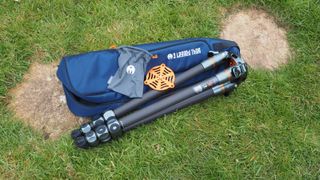
Specifications
Reasons to buy
Reasons to avoid
✅ You want a tripod that’s equally useful for videography as well as stills.
✅ You’re happy to buy one or two heads separately.
✅ You need a tripod with a really hefty 60kg maximum load rating.
❌ The 1.56m maximum height is insufficient, there’s no extending center column.
❌ You can’t stretch your budget, it’s very expensive for a set of legs.
❌ You don’t need a tripod that’s ideally suited to panning.
Let me start by saying that the 3 Legged Think Nicky is a professional-level tripod for a discerning audience. It’s made for photographers and videographers working with heavier kits, so it’s strong, straightforward to use, tall, and adaptable. It’s a base rather than a kit, but I have a collection of heads and accessories already (as many photographers do), so I’m happy to mix and match, or you can naturally buy the kind of head you want for stills and/or video, and perhaps a leveling bowl too.
What sold me on the Nicky is that works so well for both stills and video shooting. It’s super-strong and sturdy and, although very versatile, it’s very quick and easy to set up and fold down again. I like that it comes complete with flat and bowl plates but, as I’d expect from a ‘hybrid’ video and stills tripod, it has no center column. As such, the maximum operating height is limited to 1.56m. On the other hand, it works really well for low-level shooting and can be converted to a table-top tripod with optional Vanz footwear, as all three legs are removeable.
Read more: 3 Legged Thing Legends Nicky review
| Features | The feature set is ideally suited to panning shots for stills as well as videography. | ★★★★★ |
| Design | The design makes the tripod very versatile although the maximum height can feel limiting. | ★★★★★ |
| Performance | Living up to its 60kg load rating, the stability of this tripod is exceptional. | ★★★★★ |
| Value | It’s very expensive for a set of legs, considering that no head is included. | ★★★★ |
Best compact tripod
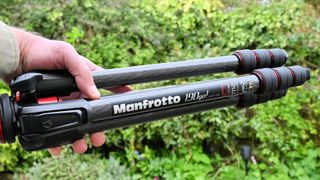
Specifications
Reasons to buy
Reasons to avoid
✅ You want a tripod that folds down conveniently small for carrying around.
✅ You prefer twist locks rather than the flip locks of most 190 series tripods.
✅ You like to pair the legs with your own choice of head.
❌ The 494 ball head of the complete kit option isn’t an ideal match for the load rating of the legs.
❌ You don’t need a tripod with a 90-degree pivoting center column.
❌ You’d rather have a tripod with a taller maximum operating height.
This is my go-to tripod when I want to keep the weight off, and the size of my kit to easily manageable proportions. Manfrotto 190 series tripods are somewhat legendary but the 190go! is unusually compact and has twist locks rather than the usual flip locks for its leg sections. Technically, I wouldn’t class it as a travel tripod, as it doesn’t feature the usual swing-up legs that are now the norm. It also has four rather than five sections in each leg, and a single-section center column. It doesn’t fold down as small as most current travel tripods but the plus side is that it’s really quick and easy to set up and pack away.
One of the things I like best about this tripod is its pivoting center column, which I can use as a horizontal boom. That’s good news for macro photography, really low-level shooting, and for ultra-wide-angle shots. It’s generally sold as a set of legs with no heads but is available in some regions as a complete kit with a high-performance Manfrotto 494 Ball Head. I’d give that a miss as the head has a much lower load rating than the legs. The carbon fiber version is typically pricier but more luxurious than the aluminum edition.
Read more: Manfrotto 190go! review
| Features | The features make it very versatile, including the pivoting center column. | ★★★★★ |
| Design | The design make it quick and easy to use, but the maximum height is merely modest. | ★★★★★ |
| Performance | For a relatively compact tripod, it’s particularly stable and rigid. | ★★★★★ |
| Value | It’s pricey for its size, and the aluminum version only costs half as much to buy. | ★★★★ |
Best super-sized tripod
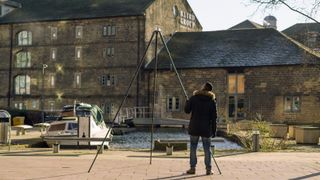
Specifications
Reasons to buy
Reasons to avoid
✅ You want a giraffe of a tripod that towers above competing kits.
✅ You don’t mind lots of clamps to contend with, it has 6-section legs.
✅ You want a ‘Rolls Royce’ product and don’t mind paying for the privilege.
❌ You’re not prepared to pay three times the price compared with most high-end tripods.
❌ You’d rather have a center column and less leg sections.
❌ You’d prefer to have a tripod that’s not so heavy to cart around.
Sometimes things just get in the way. When I can’t work around obstacles, this tripod generally enables me to look over them. The Gitzo GT5563GS is nicknamed ‘Giant’ with good reason. It extends to an absolutely whopping maximum height of 278cm, which is taller than anyone alive – I feel that perhaps a stepladder should also be included in the kit. Despite its towering height, it also goes extra-large on load capacity, at a weighty 40kg. I’m struggling to think of any camera and lens combination that weighs this much but an upside is that the Gitzo is extremely sturdy and resistant to flexing.
I’m happy that this isn’t just a ‘tall’ tripod. There are plenty of times when I want to get down low for creative effect. The Gitzo obliges with a minimum working height of just 10cm. Suffice it to say that it ably covers all the angles from ultra-low to super-high shooting. The carbon fiber build makes it lighter than I’d expect for a tripod of this height and strength, and the quality throughout is just top-notch – as I’d expect from a super-expensive Gitzo tripod.
Read more: Gitzo GT5563GS Systematic Series 5 Carbon Fiber Tripod (Giant) review
| Features | The killer feature of this tripod is its huge maximum operating height | ★★★★★ |
| Design | Gitzo is arguably the best brand for tripods and this one’s flawlessly designed. | ★★★★★ |
| Performance | It’s really stable, even at its monstrous 2.78m maximum height. | ★★★★★ |
| Value | There’s no getting away from the fact it’s fiendishly expensive for a set of legs. | ★★★★ |
How to choose the best tripod for photographers
So what do I look for when choosing a tripod? Size and weight are key considerations. For versatility, there’s no beating a full-sized tripod with a lofty maximum operating height. Some go further still with a pivoting center column, ideal for macro photography and shooting with really wide-angle lenses, so I can keep the tripod feet out of the frame. Full-sized carbon fiber tripods tend to be around 25 percent lighter in weight than their aluminum counterparts, making them easier to carry around, and they’re often more resistant to vibration. The flip side is that they’re more expensive to buy.
The maximum load rating is important to bear in mind if you have a relatively hefty camera and big telephoto lenses. Even if you don’t, I find that tripods with a beefier load rating tend to be more sturdy, solid, and stable, and less prone to flexing. A greater number of sections in each leg enables the tripod to fold down smaller but each joint is a potential weak point when it comes to stability, they take longer to set up and fold down, and the bottom legs often tend to be relatively thin and spindly.
Aluminum or carbon fiber?
These are the two most common materials used for tripod legs. Aluminum tripods are cheaper but weigh more. They’re ideal if you want the maximum stability for your money. Carbon-fiber tripods cost more but weigh less and absorb vibration better. They’re good if cost is less important than weight – but the price premium can be substantial.
How much height do I need?
Shots aren’t always improved by shooting them at eye level (lower often works best), but it’s also about getting a comfortable working height. Check the height without the column being extended, if you can.
Check the folded length
The weight of a tripod is important if you’re going to carry it any distance, but so is its folded length. If it’s too long to strap to your bag, and it’s unwieldy in trains or climbing over stiles, then it’s going to put you off taking it anywhere. Many so-called ‘travel’ tripods have legs that fold upwards for storage and completely enclose the head. This makes them smaller and neater when folded and easier to carry around.
How many leg sections?
Tripod legs may have three, four, or five sections. A larger number of sections means the tripod is shorter and more portable when it’s folded, but it will usually take a little longer to set up and may well not be quite as stable.
What type of leg locks?
These come in two main types: twist locks and flip locks. Twist locks take up less space and are generally a little quicker to use – you can often unlock all the leg sections in a single movement when you’re setting the tripod up. Flip locks are operated individually and may be a bit slower. Try both types to see which you prefer.
How many leg angles?
Most tripods have legs that can be angled independently – which is particularly useful when working on sloping sites or in cramped areas. The standard leg angle will be fine for regular use, but it’s often useful to splay one or more legs outwards on uneven surfaces or to rest them on walls, say. Splaying out all three legs will allow you to shoot from a much lower angle.
What type of head should I get?
Sometimes the tripod head is included with the legs, sometimes not. You can change one head for another depending on how you like to work, as the connection is standardized. Ball heads and three-way heads are the most common types. Ball heads are compact and quick to use, but not so good for small, controlled movements. Three-way heads are larger but allow precise adjustments for each axis independently.
You can also find other, specialist heads. Geared heads allow you to make fine adjustments to camera angles. Gimbal heads are designed for use with long, heavy lenses – which can otherwise can unbalance a tripod. And then there are specialist heads for panoramas and video too.
What about attaching my camera?
Most tripods are sold with heads, and most heads have a quick-release plate so that you can detach the camera in moments for handheld shots. The Arca Swiss-compatible plate is by far the most common, meaning you can swap between different tripod heads, even if they're made by different manufacturers. However some makers, notably Manfrotto, make their own bespoke QR plates, which can be a nuisance if you have two or more tripods from different makers.
What extra features should I look for?
Detachable monopod legs: These sound really useful – a detachable leg you can then screw into the center column to make a monopod. In practice, we find these often lack the rigidity of a 'real' monopod unless you're starting with a particularly substantial tripod.
Center column: Not all tripods come with a center column, but most do. You can extend this upwards to increase the height of the camera, although this introduces extra wobble. On some tripods, the center column can be rotated to produce an angled boom, which is perfect for overhead shots, macro work, and tabletop photography. Using the center column does reduce the stability of the tripod, however, so is best avoided with long exposures.
Bowl base: This is a video-specific feature that allows you to get the base level without having to make a whole series of tiny adjustments to the leg length. A level base is essential for a video where you want to make panning movements, and the best video tripods come with bowl or leveling bases as standard.
Types of feet: Rubber feet are fine on most surfaces but best on carpets and wooden floors, where you don’t want to cause damage. Metal spikes are good for soft and uneven ground. Some tripods have rubber feet, which can be screwed back to reveal spikes.
How we test tripods
We measure the maximum operating height of each tripod and its folded height for carrying, complete with head attached. We also measure the combined weight of each set of tripod legs and head, using electronic scales, and measure the diameter of all leg sections, from the widest to the thinnest, using digital calipers.
We check the ease of use, smoothness and precision of all available adjustments in each set of tripod legs and heads. This ranges from adjusting leg sections and pivot facilities (where available), to the locking mechanisms of the head, as well as independent pan and friction damping adjustments, where fitted.
To check overall stability, we shoot with a range of camera bodies fitted with wide-angle, standard, telephoto and macro lenses. We look for good resistance to flexing and vibrations throughout the whole range of operating heights, including the tallest available settings with the legs and center column fully extended.
You can find out more about how we test and review on Digital Camera World.
Get the Digital Camera World Newsletter
The best camera deals, reviews, product advice, and unmissable photography news, direct to your inbox!
Matthew Richards is a photographer and journalist who has spent years using and reviewing all manner of photo gear. He is Digital Camera World's principal lens reviewer – and has tested more primes and zooms than most people have had hot dinners!
His expertise with equipment doesn’t end there, though. He is also an encyclopedia when it comes to all manner of cameras, camera holsters and bags, flashguns, tripods and heads, printers, papers and inks, and just about anything imaging-related.
In an earlier life he was a broadcast engineer at the BBC, as well as a former editor of PC Guide.
- Rod LawtonContributor
- Sebastian OakleyEcommerce Editor